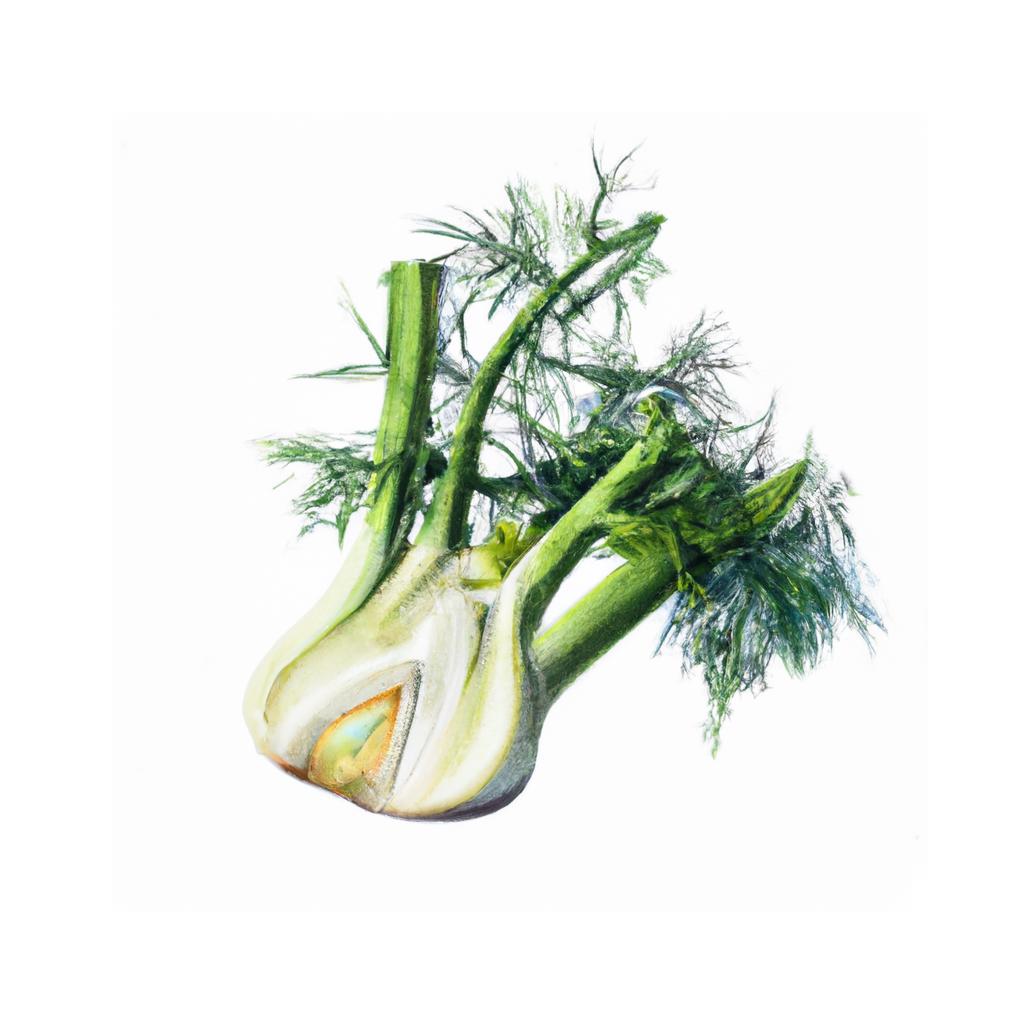
Fennel (Foeniculum vulgare) is a fragrant and versatile vegetable that belongs to the carrot family. It is native to the Mediterranean region and has been used in culinary and medicinal practices for thousands of years. This aromatic vegetable is characterized by its feathery leaves, bulbous base, and long, hollow stems. In ancient Greek culture, fennel was known as 'marathron,' which means 'to grow thin,' as it was believed to have weight loss properties.
The entire fennel plant is edible, including its bulb, stalks, leaves, seeds, and flowers. Its anise-like flavor and crunchy texture make it a popular ingredient in various dishes. The mildly sweet and licorice-flavored bulb works well when sliced thinly in salads or roasted in side dishes. The stalks and leaves can be used as a flavorful addition to soups and stews, while its seeds are often used as a spice, particularly in Indian and Italian cuisines.
Fennel boasts a rich nutritional profile, providing essential vitamins and minerals such as vitamin C, potassium, manganese, and folate. It is also high in dietary fiber, which promotes digestive health, and contains antioxidants that help to protect cells from damage caused by free radicals.
When growing fennel in your garden, it requires full sun exposure and well-draining soil, with a pH between 6.0 and 7.0. Fennel is a cool-season crop and can be sown in early spring or late summer for a fall harvest. To encourage bulb development and reduce bolting, ensure consistent moisture and remove any flower heads that may appear before they open.
Fennel pairs well with a wide variety of ingredients, such as citrus fruits, tomatoes, olives, and fresh herbs like dill and parsley. It's delicious in seafood dishes and makes a great accompaniment to roasted or grilled meats. Try combining fennel with fruits like apples or pears for a refreshing salad, or toss it with pasta and a light cream sauce for a simple yet flavorful meal.
This is advice is most applicable to growers in the UK, you may need to adjust the timings if you live somewhere with a different climate and/or seasons.
| Month | Tasks | Advice |
|---|---|---|
| January | - | - |
| February | Start seeds indoors, | Sow fennel seeds in trays or pots indoors at a temperature of 15-20°C. |
| March | Transplant seedlings, Harden off seedlings, | Transplant seedlings into individual pots when they are large enough to handle. Begin hardening off towards the end of the month. |
| April | Plant out hardened seedlings, Sow seeds directly outdoors, | Plant out hardened seedlings 12 inches apart, in rows 18 inches apart. Sow seeds directly outdoors, but cover with cloches if needed to protect from frost. |
| May | Thin seedlings, Water regularly, | Thin seedlings to 12 inches apart as they grow. Keep the soil consistently moist by watering regularly. |
| June | Water regularly, Earth up bulbous bases, | Continue watering regularly, especially during dry spells. Earth up the bulbous bases to blanch and encourage growth. |
| July | Water regularly, Harvest leaves as needed, | Keep the soil moist and harvest leaves as needed, but do not remove too many from each plant. |
| August | Monitor bulb growth, Harvest bulbs, | Check the bulbous bases for readiness, they should be about the size of a tennis ball. Harvest bulbs by cutting the plant at ground level. |
| September | Harvest any remaining bulbs, | Harvest any remaining fennel bulbs before the first frost. |
| October | - | - |
| November | - | - |
| December | - | - |